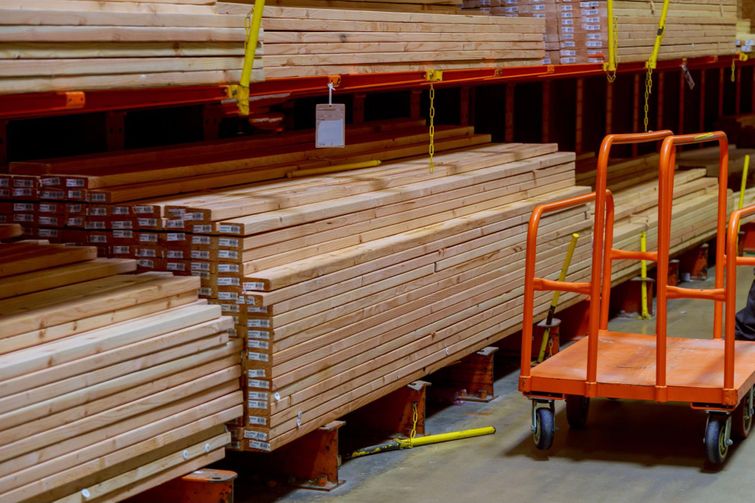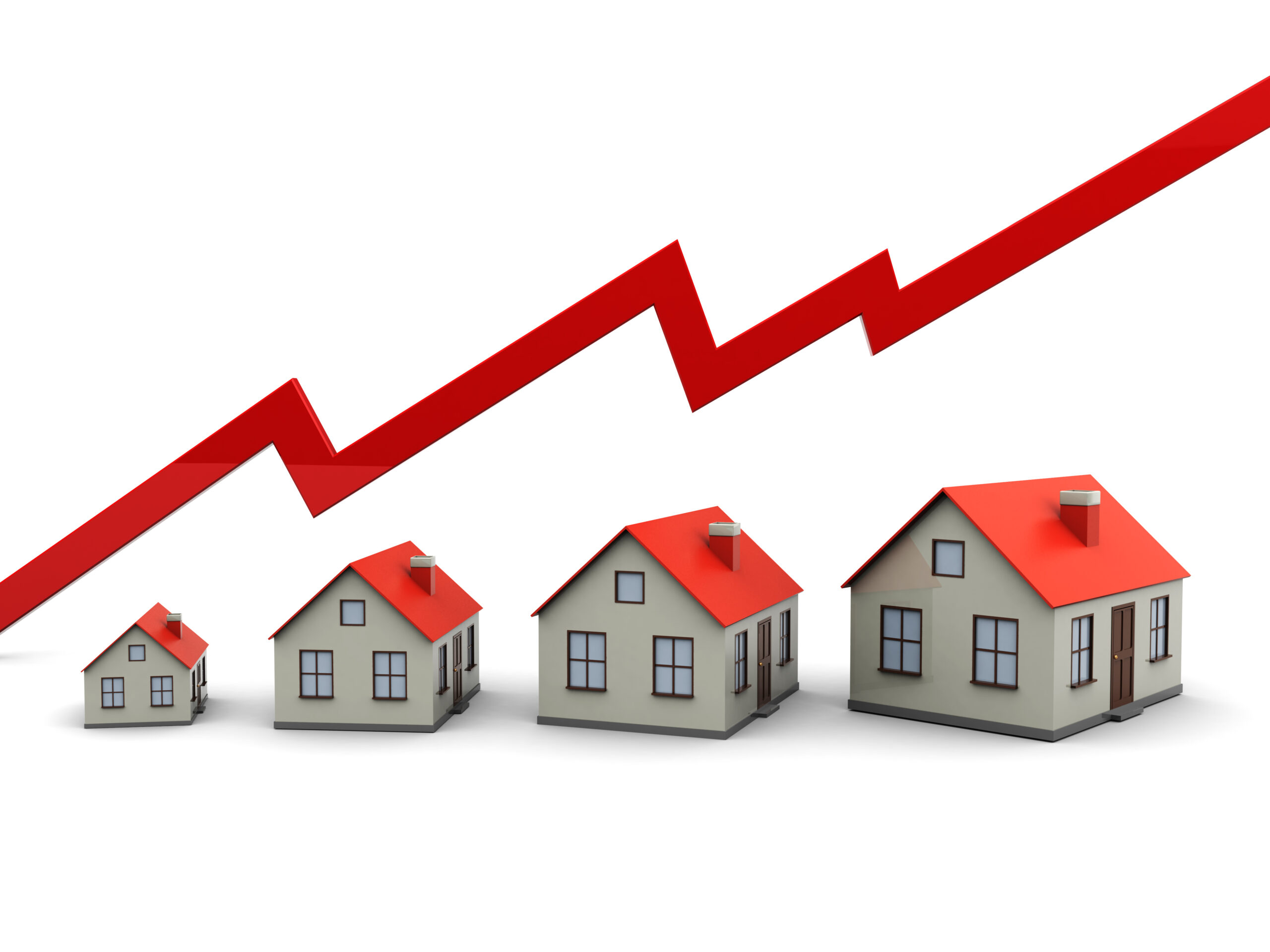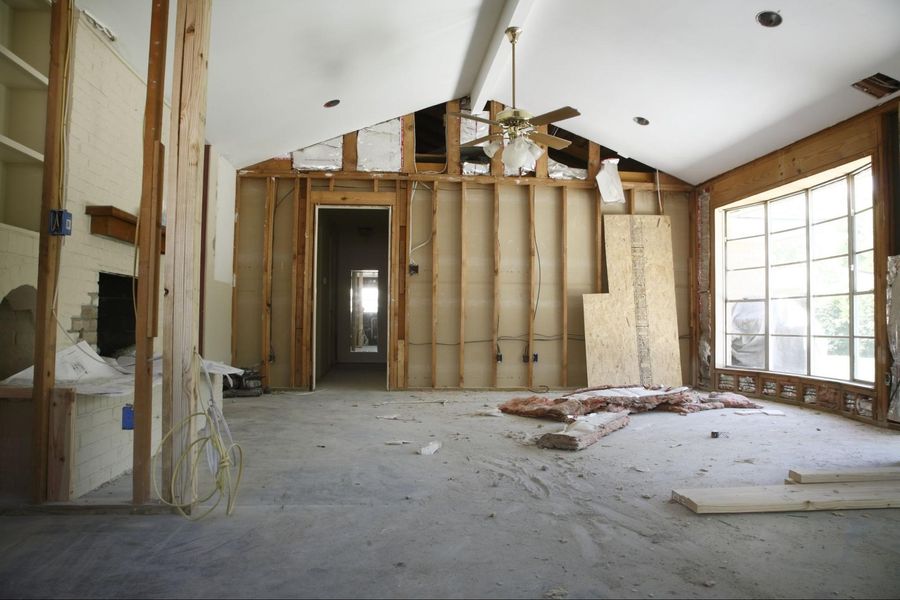Prices of lumber skyrocketed to never before seen heights in the past year as the supply chain suffered the effects of the ongoing COVID-19 pandemic. Now, those higher prices have vanished as quickly as they arrived and prices have stabilized.
With lumber being a major input cost of housing development and renovation projects, hopes are rising that this could be a sign of things to come. But despite positive signs, we aren’t out of the woods yet.
What has happened since 2020?
When the pandemic swept over the world in early 2020, most industries around the globe were interrupted and forced to adapt. There were multiple major factors in that time that drove high lumber prices.
What follows is a basic rundown of the conditions affecting softwood lumber prices in the early days of the pandemic and some information on current conditions, as well as a future forecast into 2022.

Reduced production capacity caused supply woes
The first difficulty in the lumber industry was the constricted ability for lumber harvesting and milling to continue at the same pace it had held previously. Most workplaces across the country had to limit the number of workers on-site at any time and the lumber industry was no exception.
With fewer hands at work, the productivity of logging and lumber mills naturally fell.
A sluggish supply chain amplifies inventory issues
The issue of lower supply created by slowed production was only accentuated by difficulties in the transportation and logistics of lumber. It takes many steps to take a tree in the woods and turn it into the walls of your home. Every step of the way, from transport to consumer retail, was slowed to a crawl.
Slowdowns are one thing without even considering the many workplaces subject to complete shutdowns as a result of workplace covid outbreaks, and the fact that those working in manufacturing, transport, construction, and retail were among the most likely to die from COVID-19. Commodity might have been high, but the human costs were as well.

Furthermore, much of the lumber being transported from Western Canada was limited by the rampant wildfires that afflicted the province in the middle of the year. This past year’s wildfire season in BC was the third-worst on record in terms of the total area burned.
New build and renovation frenzy pushed demand higher
Another major factor was the changing importance of the homes to the many people stuck there for most of their day. Many people made the decision to move in the last year, and facing intense supply issues, many opted to have new homes built instead.
Along with an increase of people looking for new home builds, there was also a huge increase of people looking to either to accommodate space for working from home or simply to keep themselves occupied with little else to do.
The combination of limited softwood lumber supply availability and increased demand was the perfect storm to create sky-high prices for lumber.

Softwood lumber prices peaked in May 2021
Through 2020 and into early 2021, weekly lumber prices rose at unprecedented rates. Finally, Softwood lumber prices peaked in May of 2021 with benchmark softwood commodity Western Spruce-Pine-Fir coming in at over $1,600 U.S. dollars per thousand board feet. According to Madison’s Lumber Reporter, that’s over three times pre-pandemic levels. Compared to those earlier rates, a home built at the record high of softwood lumber prices would have cost up to an additional $40,000 U.S. for the same amount of wood.
From that peak, things started to decline. In fact, prices for lumber futures fell even faster than they rose. Again, numerous factors are at play in this change. Firstly is the easing of restrictions and the increased capacity for production.
Another is the mounting of uneasy consumer feelings of prices far higher than they should be. Despite many people choosing to hold off on construction until prices were better, the prices continued to rise.
However, excess lumber inventories began to rise and lumber sales volumes fell as more and more people balked at prices. Fortunately for consumers, prices eventually bowed to lowering demand and corrected dramatically.
Producers in Western Canada reacted dramatically to falling prices
Between May and September 2021, cash prices tumbled all the way down to around $400 U.S., about a quarter of their prices at peak. Though prices now are lower than the same week in 2020, they are still up from the prices of the same week two years ago.
With the crash in prices, many retailers were forced to sell off inventory at a loss. Some softwood lumber yards such as Canfor Corp in British Columbia even decided to curtail production for a limited time. They cited concerns of wildfire season in Western Canada, though many believe the choice was instead an attempt to lower availability and slow the decline of lumber markets.

Prices back up to above $500 U.S. per thousand board feet shortly after bottoming out
Now, after tumbling rapidly, lumber markets are back on the rise again in recent weeks, though not so dramatically as before. As of October 8, 2021, the price of Western S-P-F was $580 U.S., according to Madison’s Lumber Reporter weekly lumber prices report.
Now, as pandemic tensions ease and many aspects of life return to normal, the question of the future of lumber prices is on the mind of analysts. The past year alone has seen multiple significant climbs and drops in softwood lumber prices – so what does the next year hold?
A return to stability forecasted for lumber prices
One trend being witnessed in multiple markets right now, including the housing market, is a return to stability after a year of unpredictable fluctuation. You could say that the current trends of lumber prices post-correction are displaying the same stabilizing.
Prices have increased since the bottom of the crash, but nowhere near at the rate they did previously. Though prices are now slightly elevated on a historical basis, they are not significantly overvalued either.
It’s likely that the recent drop could be the lowest price we see for a while now. There is still a huge demand for houses, and with society reopening, a surge in new house builds will likely continue to drive strong demand for lumber. Current estimates predict the price of lumber continues to edge upwards into next year.

What lower prices mean for consumers
A drop in prices does not necessarily mean that consumers can rush out today and buy wood at a greatly reduced price, however, things may start to look better very shortly. Unfortunately, the prices quoted above are internal industry prices and often do not reflect the retail price that the average person has access to. As cheaper lumber cycles through the industry, savings can begin to be passed off to consumers. Until then, some may continue paying more.
Retail prices can’t immediately reflect industry prices
As mentioned before, stores are, in some cases, still trying to sell off more expensive inventory without taking too much of a loss. Until that inventory has cleared, prices may remain higher.
Also, consider that many lumber trends are reported as futures, meaning that the price paid now to suppliers is for lumber delivered at a future date, affecting how quickly price changes can be spread.
Gradually, however, lumber pricing at retail should come to reflect market prices.
Retail demand could pick up, though many are forgetting DIY ambitions
There is also the fact that many have held off on completing building projects and home renovations until the price came down. As they do, you may find that the new issue is not wood being too expensive, but finding any to buy in the first place as retail demand picks up once again.
Hopefully, this demand will be offset somewhat by the many people now looking to fill their time with travel and social events rather than DIY projects and home improvements now that many pandemic-related restrictions are beginning to ease across Canada and set to be fully removed by the middle of next year.
Effects on new builds and home prices
Many are hopeful that will be reflected in a drop in home prices. With lower prices of wood, more people may be able to opt for newly built properties, taking pressure off the resale market and promoting lower prices.

It may also encourage later developers who have held off on large-scale projects due to the lumber rally to finally take action, possibly easing some of the demand on the market.
Unfortunately, the relationship between lumber and home prices is complicated. For example, many people have already signed contracts for home construction long ago and may be forced to pay at the more expensive rate they originally agreed to. Just like stores, builders may have excess inventory of more expensive products that they will try to sell above current market value to maintain profitability.
Shortages in other home building components to keep prices inflated
Another thing to consider is that most houses are not made of strictly wood. As the supply chain still struggles to catch up, many of the other components that go into construction may still be hard to come by or only available for a high price. These shortages include electrical, plumbing, household appliances, cabinetry, and even labor required to build the homes themselves.
Prices will remain elevated to an extent until supply chains across multiple industries are able to stabilize. Until then, new builds will remain expensive, and new housing inventory can only help cool off home prices when they are able to be built for a better price than resale homes. Currently, that is not the case.
Development slowing despite affordable lumber
This is somewhat proven by recent data from the Canada Mortgage and Housing Corporation which indicates that housing starts in Canada were down across Canada in September 2021, though still above pre-pandemic levels. Now, it’s not uncommon to see development go in cycles through the year, but it’s clear that the crash in lumber has not caused a proportional boom in development.
Ultimately, there are many more factors than just lumber at play, and the relationships between commodities and developments are highly complex.
Conclusion
With so much discussion in the real estate world being concerned about abstract market forces it is often overlooked how important the materiality of homes is to their value. After all, without the actual building itself, and the materials that comprise it, there would be little purpose to most real estate investments. Therefore it is important that investors educate themselves beyond the housing market, and consider the supplemental commodity markets that all play their small part in economic trends that can have serious impacts on your investments.
Corben joined CREW as a relative newcomer to the field of real estate and has since immersed himself and learned from the experts about everything there is to know on the topic. As a writer with CREW, Corben produces informative guides that answer the questions you need to know and reports on real estate and investment news developments across Canada. Corben lives in Guelph, Ontario with his partner and their two cats. Outside of work, he loves to cook, play music, and work on all kinds of creative projects. You can contact Corben at corben@crewmedia.ca or find him on Linkedin at https://www.linkedin.com/in/corbengrant/.









